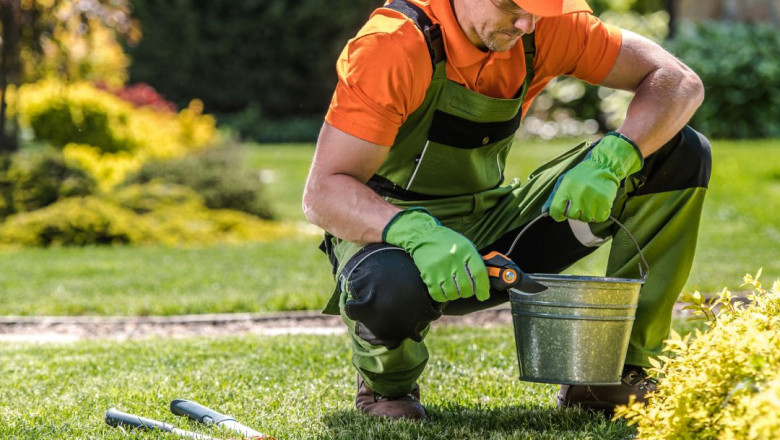views
For commercial properties managed by homeowners’ associations (HOAs), landscape planning is not just about aesthetics—it’s a strategic investment. HOA landscape maintenance goes beyond regular mowing or seasonal plantings; it involves a proactive and comprehensive approach that ensures long-term value, property appeal, and resident satisfaction.
A well-thought-out landscape master plan helps HOAs address current issues while setting a solid foundation for future development, environmental sustainability, and operational efficiency.
What Is HOA Landscape Master Planning?
HOA landscape master planning is a long-term vision that aligns landscaping decisions with the association’s overall goals and budget. It covers design concepts, hardscape integration, plant selection, irrigation strategy, and maintenance scheduling. More than just a visual roadmap, it provides actionable guidance for ongoing and future improvements.
For commercial HOA communities such as condominiums, gated neighborhoods, and multi-building complexes, this planning is essential to maintaining a cohesive, professional, and functional environment.
Benefits of a Landscape Master Plan for HOA Properties
Enhancing Property Value and Curb Appeal
One of the most immediate advantages of a landscape master plan is the boost it provides to property value. Professionally maintained landscapes give commercial HOA communities a clean and inviting appearance that attracts potential investors, tenants, and residents. Over time, this consistency in visual presentation contributes to positive brand perception and long-term asset growth.
Improved Budgeting and Cost Efficiency
Without a structured plan, HOAs often face reactive maintenance costs that strain annual budgets. A master plan introduces predictability. It outlines which features require attention, when updates are needed, and how resources should be allocated. This minimizes waste, avoids costly last-minute fixes, and allows for bulk purchasing of materials or contracted services.
Sustainable Landscaping Practices
Sustainability is increasingly important for modern HOA communities. A landscape master plan encourages practices like xeriscaping, native plant usage, efficient irrigation, and erosion control. These elements not only reduce environmental impact but also lower ongoing maintenance costs—a win for both the planet and the property’s bottom line.
Long-Term Functionality and Safety
Beyond beauty, landscape planning ensures accessibility, safety, and usability across the community. Master planning incorporates walkways, lighting, seating areas, and other features that enhance functionality. It also identifies potential risks like overgrown trees near buildings or poorly graded areas that could cause flooding or trip hazards, allowing for timely intervention.
Key Elements of an Effective HOA Landscape Master Plan
Site Assessment and Inventory
Before crafting a plan, landscape professionals typically perform a thorough site assessment. This includes evaluating existing plant material, irrigation infrastructure, soil conditions, and property layout. An accurate inventory allows planners to understand what can be retained, what needs replacement, and where upgrades are possible.
Vision and Design Development
The vision phase combines the community’s objectives with environmental and budgetary constraints. It’s important to consider climate, plant hardiness zones, and the functional needs of the HOA’s residents. Design development may also incorporate hardscape elements like patios, retaining walls, drainage systems, and signage.
Irrigation and Water Management
Water efficiency is a major component of successful hoa landscape maintenance. A master plan should detail how water will be used and conserved. Smart irrigation systems, rain sensors, and drip lines are examples of modern solutions that can significantly reduce water usage while keeping landscapes healthy and vibrant.
Phased Implementation Strategy
Implementing a landscape master plan all at once isn’t always feasible for commercial HOAs. A phased approach allows for gradual improvements in manageable steps. This method also makes it easier to gain board approval and align changes with budget cycles or funding sources such as reserve accounts.
Why Work with Commercial Landscape Professionals?
Professional landscape companies with experience in commercial HOA maintenance understand the unique requirements of large-scale community spaces. They bring expertise in zoning, permitting, environmental regulations, and seasonal care. Their guidance ensures the plan is both visionary and practical—balancing design ambitions with maintenance realities.
An experienced team can also help HOAs establish long-term maintenance contracts that reflect the plan’s goals, making hoa landscape maintenance more consistent, efficient, and aligned with the overall vision.
In summary, HOA landscape master planning is more than a design project—it's a forward-thinking strategy that enhances the long-term value, functionality, and appeal of commercial communities. By taking a proactive approach, HOAs can transform their landscape from a routine expense into a strategic asset.
Through professional planning, sustainable practices, and structured maintenance, commercial HOA properties can enjoy improved resident satisfaction, greater operational efficiency, and a stronger market position. Investing in a landscape master plan today sets the stage for a greener, more attractive, and financially sound tomorrow.














Comments
0 comment